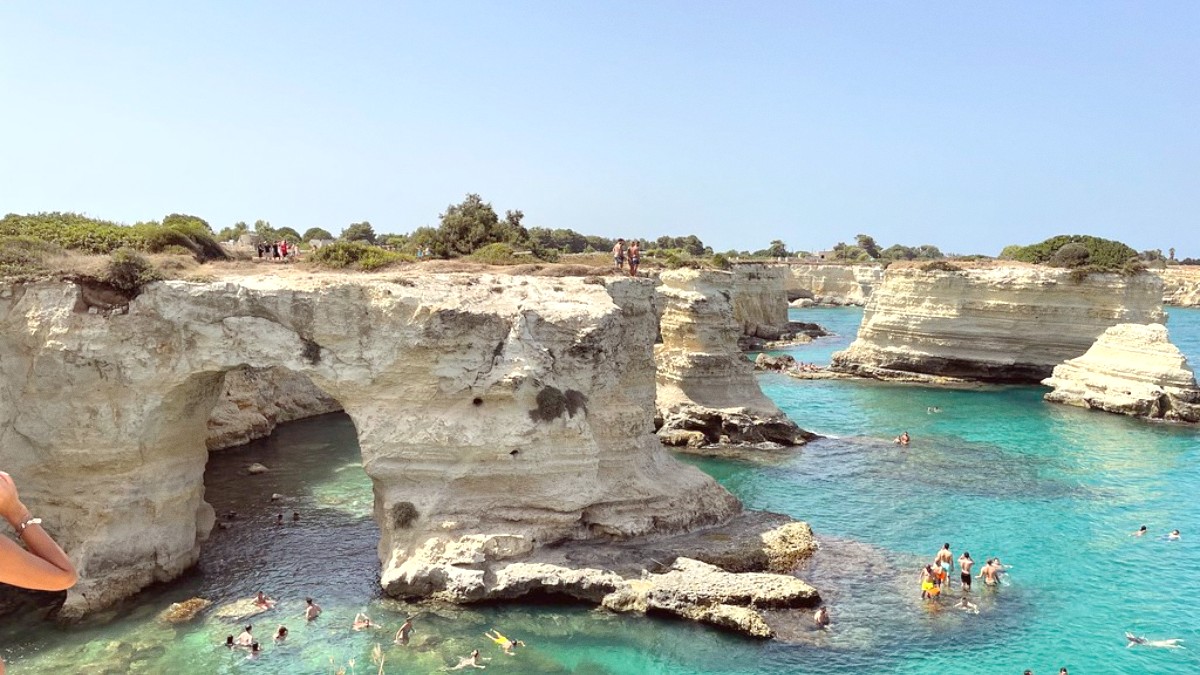
Puglia, Italy
Lecce showcases its rich history and architectural prowess through its iconic landmarks.
Piazza Sant'Oronzo, the main square, holds the Colonna di Sant'Oronzo and a partial Roman Amphitheatre. It serves as a bustling meeting point.
This combined ticket covers Duomo, Basilica di Santa Croce, Chiesa di San Matteo, Chiesa di Santa Chiara.
In the ex-Monastero di Santa Chiara, covers city history and contemporary art.
Several small galleries in the historic center showcase local contemporary art.
Another significant theater for cultural events, including contemporary performances.
Check local listings or museum websites for special exhibits or performances during your visit.
Castello Carlo V and MUST host temporary art exhibitions.
Lecce's historical sites offer a journey through its layered past, from ancient ruins to grand Baroque structures.
Roman Amphitheatre in Piazza Sant'Oronzo; smaller Roman Theatre behind Basilica di Santa Croce. Museo Faggiano has underground excavations.
A living museum of Baroque architecture. Wander its intricate streets to find hidden courtyards, palaces, and ornate churches.
Basilica di Santa Croce, Duomo di Lecce, Chiesa di San Matteo (unique concave-convex facade), Chiesa di Santa Chiara, Chiesa del Carmine.
Colonna di Sant'Oronzo in the main piazza. Smaller monuments and statues across the city.
Castello Carlo V: The most prominent example of military architecture, a 16th-century fortress.
Monastero degli Olivetani: Former monastery, now part of University of Salento, with a beautiful cloister.
The Centro Storico as a whole is a historical district. Its buildings tell stories of Lecce's golden age.
Private excavations reveal layers of ancient Roman or Messapian Lecce beneath existing structures.
Explore the hidden courtyards of Lecce's noble palaces. Many are privately owned but offer glimpses of exquisite architecture from their entrances.
Lecce is a city of stone, but the surrounding Salento region provides various natural attractions within easy reach.
Beyond its prominent landmarks, Lecce has hidden gems and local favorites. These give a , more authentic city experience.
Vico dei Vetrai, a charming alley, once housed glassmakers. It keeps an artisan feel with small shops.
Many noble palaces in the historic center feature beautiful, often hidden Corti (Courtyards). Glimpse their exquisite architecture.
Explore the Mercato di Porta Rudiae for an authentic local market. It displays daily life in Lecce, selling fresh produce and goods.
The Adriatic Coast (east) features San Cataldo, Torre Chianca, Spiaggia di Torre dell'Orso, and Grotta della Poesia for dramatic coastline and coves.
Seek out a traditional paper-mâché workshop in the historic center. You can observe the craftspeople at work and purchase unique, handmade souvenirs.
Head to the nearby coasts for natural beauty. The Adriatic has rugged cliffs and sea caves, while the Ionian provides sandy beaches and clear waters.
Coastal trails near Lecce offer scenic routes in Parco Naturale Regionale Porto Selvaggio. Paths wind through pine forests and lead to coves.
Swimming, snorkeling, diving, paddleboarding, kayaking, and boat tours. Popular during warmer months in coastal towns like Porto Cesareo or Gallipoli.
Explore the flat countryside around Lecce through expansive olive groves and small villages. Coastal cycling paths are popular.
The Adriatic offers rugged cliffs and sea caves. The Ionian provides sandy beaches and clear waters.
Find coastal toursMuseo Provinciale Sigismondo Castromediano houses archaeological finds and paintings.
Book museum ticketsTeatro Politeama Greco hosts opera, concerts, and theatrical performances.
Check performance schedulesBasilica di Santa Croce is the pinnacle of Lecce Baroque with intricate carvings.
See Baroque architectureThe Museo della Cartapesta showcases the traditional art of paper-mâché.
Learn about local craftsThe Roman Amphitheatre, visible in Piazza Sant'Oronzo, dates back to the 2nd century AD. It once hosted gladiator fights.
This massive 16th-century fortress, built by Emperor Charles V, defended the city. It offers strong walls and bastions.
Lecce offers a captivating blend of history, art, and regional charm. Every corner of the historic center reveals architectural beauty.
Plan your visits considering opening hours and potential combined tickets for cost savings.
Beyond the city's Baroque wonders, discover the natural beauty of Salento and Lecce's quieter spots.
Villa Comunale (Giardini Pubblici Giuseppe Garibaldi) is a pleasant city center garden. Parco di Belloluogo offers more expansive green space.
Nearest beaches are 11-15 km away by car or bus. Adriatic Coast (east) for dramatic coastline, Ionian Coast (west) for sandy beaches.
The widespread use of Pietra Leccese (Lecce stone) in the city's architecture directly connects to the soft limestone geology.
A charming alley where glassmakers once had workshops. It still holds an artisan feel with small shops and studios.
Discover local craftsHidden courtyards of noble palaces often show exquisite architecture and serene atmospheres. Glimpses from the street are possible.
Find hidden courtyardsAn authentic local market. It provides a glimpse into daily life in Lecce, selling fresh produce and household goods.
Experience local lifeA beautiful medieval church with Romanesque and Gothic elements. It offers a striking contrast to Baroque architecture.
See unique architectureThe dramatic silhouette of Piazza Duomo at night, with its lit facades, makes for a memorable visual and photo opportunity.
Night photography spotsLecce Sotterranea refers to several privately owned properties or businesses with excavated basements revealing ancient Roman or Messapian layers.
Parco Naturale Regionale Porto Selvaggio e Palude del Capitano, near Nardò, offers opportunities for birdwatching and observing local flora and fauna.